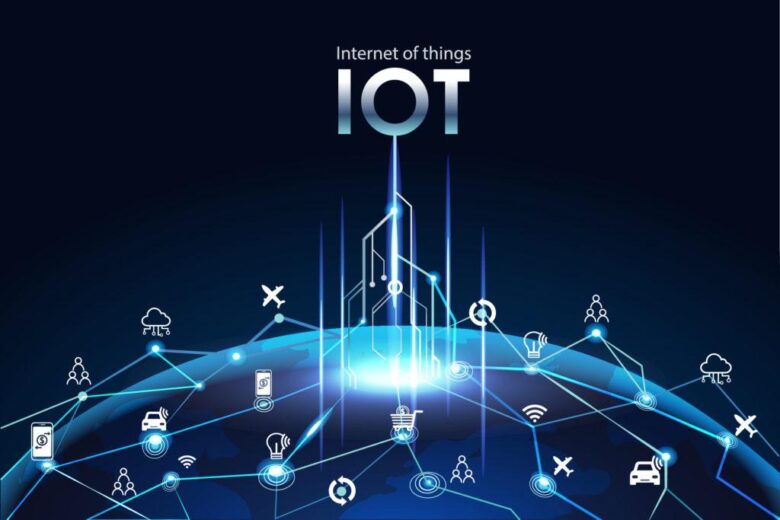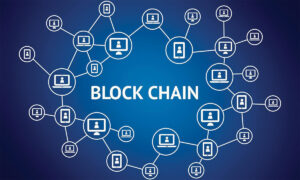The Internet of Things (IoT) has revolutionized the way we use technology by connecting everything from industrial sensors to smart homes. However, because traditional IoT systems rely on centralized servers, they are vulnerable to single points of failure, data breaches, and cyberattacks. A promising alternative is decentralized IoT, powered by peer-to-peer networks and blockchain technology. Control is distributed across multiple nodes, improving performance, security, and anonymity. But will this new technology truly lead to a safer and better future? This article explores the possibilities, challenges, and practical effects of decentralized IoT.
Understanding How Decentralized IoT Works:
With decentralized IoT, data processing and storage move from centralized servers to a decentralized network of devices. IoT devices communicate directly with each other via blockchain or mesh networks, without relying on a single cloud service. Smart contracts automate transactions and enforce security policies without an intermediary. This approach ensures that no single entity controls the entire system, resulting in lower latency and greater resilience. Decentralized IoT makes the ecosystem of connected devices more resilient and transparent by eliminating single points of failure.
Key Advantages of Decentralized IoT over Traditional Systems:
Increased security is one of the key advantages of decentralized IoT. Because data is distributed across multiple nodes, it is difficult for hackers to attack the entire network. Privacy also benefits, because users control their data instead of leaking it to companies. Decentralization ensures that the system continues to run even if some nodes fail, minimizing downtime. Peer-to-peer communication also reduces costs by eliminating cloud service fees and intermediaries. Because of these advantages, decentralized IoT is well-suited for sectors such as healthcare, manufacturing, and smart cities that require high reliability.
Limitations and Challenges of Decentralized IoT:
Despite its promising prospects, decentralized IoT still faces many challenges. Scalability is a significant challenge, as blockchain-based networks may not be able to process large numbers of transactions. Another issue is energy consumption, particularly for proof-of-work consensus mechanisms. Interoperability between different IoT devices and protocols remains a problem, as standardization is still evolving. Furthermore, strong governance is essential for decentralized network management to prevent malicious actors from exploiting vulnerabilities. Several challenges must be overcome before it can be widely adopted.
Practical Applications of Decentralized IoT:
Decentralized IoT is already being used by many sectors to develop innovative solutions. Blockchain-based sensors can manage the power grid and traffic flow of smart cities without centralized management. Decentralized IoT is being used in healthcare to securely monitor patients while protecting their privacy. Blockchain and IoT offer tamper-resistant capabilities for item tracking in supply chains. Decentralized sensors are even being used in agriculture to maximize crop yields and irrigation efficiency. These examples demonstrate how decentralized IoT can revolutionize industries by improving transparency, security, and efficiency.
The Role of Blockchain in Decentralized IoT:
Blockchain technology is a key component of decentralized IoT, providing security and trust in a trustless world. By automating device interactions, smart contracts can ensure compliance with predefined guidelines. All transactions are recorded in an immutable ledger, making auditing transparent and effectively preventing fraud. Tokenization encourages user participation by rewarding users who contribute data or processing resources. But not all IoT applications require blockchain; some can utilize simpler peer-to-peer protocols. Choosing the right decentralization strategy for each use case is crucial.
Benefits of Decentralized IoT for Security and Privacy:
Centralized IoT networks are often the target of hacker attacks, as a single vulnerability in a server can expose millions of devices. By distributing data across nodes, decentralized IoT mitigates this risk and virtually eliminates large-scale attacks. Thanks to end-to-end encryption, only authorized parties can access sensitive data. Furthermore, users have greater control over who accesses their data and when. For applications that prioritize privacy and reliability because of these security considerations, decentralized IoT is an attractive option.
The Future of Decentralized IoT in the Networked World:
As the number of IoT devices grows, so does the need for decentralized solutions. The development of edge computing and lightweight blockchain protocols will address the current challenges of scalability and energy consumption. Businesses and governments may opt for a hybrid model that combines decentralized security with centralized efficiency. Decentralized IoT has the potential to revolutionize autonomous systems, smart infrastructure, and personal devices in the future. However, overcoming technical barriers and creating a precise regulatory framework are key to success.
Conclusion:
Decentralized IoT offers unparalleled security, privacy, and resilience, revolutionizing the way connected devices operate. It reduces vulnerabilities and empowers consumers by eliminating centralized control. While challenges such as energy consumption and scalability persist, new developments are paving the way for a broader range of applications. As consumers and businesses seek more secure and efficient IoT solutions, decentralization could be the key to a smarter future. The potential of decentralized IoT is enormous, but exploration has only just begun.
FAQs:
1. How does decentralized IoT improve security?
Compared to centralized systems, decentralized IoT makes it harder for hackers to launch large-scale attacks by distributing data across multiple nodes.
2. Is it more expensive to implement decentralized IoT?
While the initial setup costs may be higher, the long-term cost savings come from lower cloud costs, fewer downtimes, and fewer vulnerabilities.
3. Can decentralized IoT function without blockchain?
Admittedly, some systems use peer-to-peer networks and federated learning, but for specific applications, blockchain can offer greater security and transparency.
4. Which sectors will benefit most from decentralized IoT?
Sectors such as healthcare, supply chain, smart cities, and industrial IoT will benefit most due to their high demands on security, transparency, and reliability.
5. Will decentralized IoT completely replace traditional IoT?
No, shortly, a hybrid approach that combines decentralized security with centralized efficiency will likely dominate the market.




